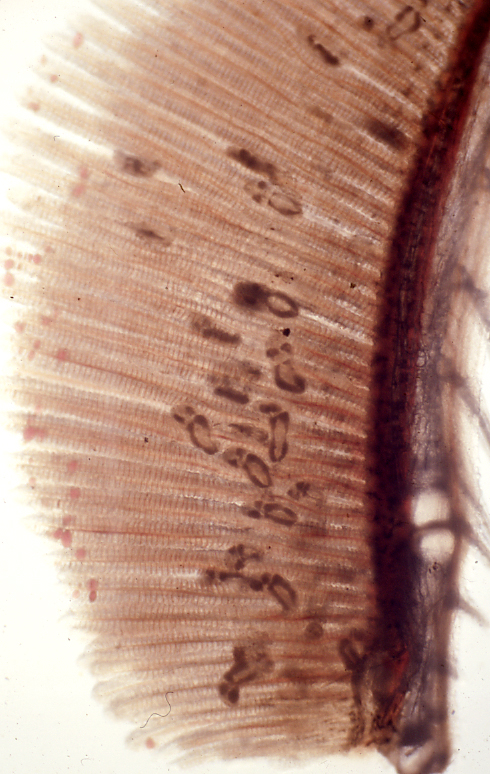
| Parasite | Tetraonchus awakurai |
|---|---|
| Taxonomy | Plathyhelminthes, Monogenea, Monopisthocotylea |
| Hosts | Masu salmon (Oncorhynchus masou masou), red-spotted masu salmon (Oncorhynchus masou ishikawai), rainbow trout (Oncorhynchus mykiss) |
| Infection site | Gill |
| Clinical signs | Parasite (ca. 1 mm) is visually observed in the gill filament (Fig. 1). Heavily infected fish exhibits excessive mucus secretion in the gill. |
| Parasitology | The elongate body is about 1 mm long (Fig. 2). T. awakurai attaches by a haptor with 2 pairs of anchors and connecting bars at the posterior end. It possesses 2 pairs of eye spots at the anterior body. T. awakurai transfers from fish to fish (no intermediate hosts) (Ogawa, 2006). |
| Pathology | Masu salmon and red-spotted masu salmon are highly susceptible to this parasite, whereas rainbow trout is resistant. |
| Health hazard | Since this parasite is not infectious to human, it is harmless in food hygiene. |
| Diagnosis | Flatten the parasite and observe the morphology. Tetraonchus awakurai can be morphologically distinguished from T. oncorhynchi infecting masu salmon and red-spotted masu salmon. T. oncorhynchi is larger in length (ca. 1.5 mm) and possesses larger testis. |
| Other information | No control methods are available, but increase of water exchange rates in the pond may be effective for reducing the infection intensity. |
| References | Ogawa, K. (2006): Tetraonchosis. New atlas of fish
diseases (ed. by Hatai, K. and K. Ogawa), Midori
Shobo, p. 41. (In Japanese) |

Fig. 2. T. awakurai
(Photos by K. Ogawa)

Fig. 1. ManyTetraonchus parasitized the gill filaments